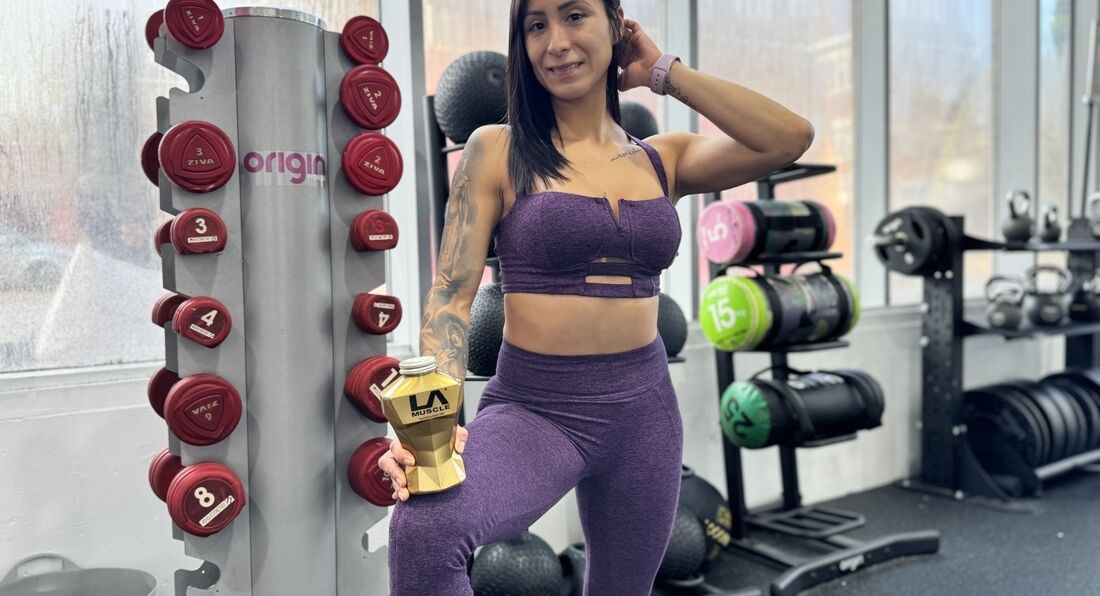The Knowledge > Better Health >
Monday, 31st March 2025
Bad Posture: The Hidden Health Risk & How to Fix It
By LA Muscle on 31.03.2025 09:22 pm

What Is Bad Posture?
Bad posture refers to the incorrect alignment of the body when sitting, standing, or moving. It often looks like slouched shoulders, a forward head, curved spine, or uneven hips. Over time, poor posture can lead to pain, discomfort, reduced mobility, and even long-term structural damage.
How Does Bad Posture Start?
Bad posture usually develops gradually. It often begins with small habits repeated over time, such as:
-
Sitting for long hours at a desk
-
Hunching over a phone or laptop
-
Carrying heavy bags on one shoulder
-
Sleeping in poor positions
-
Lack of movement or stretching
These repetitive actions cause muscle imbalances, tightness, and weakness, pulling the body out of its natural alignment.
Causes of Bad Posture
-
Sedentary Lifestyle – Sitting too long without movement weakens the core and glutes while tightening hip flexors and chest muscles.
-
Technology Use – Constant phone or laptop use leads to "tech neck" or forward head posture.
-
Poor Ergonomics – Incorrect desk or chair height can force your body into awkward positions.
-
Muscle Imbalances – Some muscles become overactive and tight while others become weak, leading to postural distortions.
-
Injury or Pain – The body compensates to avoid discomfort, often resulting in unnatural alignment.
-
Emotional State – Anxiety, low self-esteem, or stress can cause closed-off, slumped postures.
What Age Does Bad Posture Start?
Bad posture can start as early as childhood, especially with increased use of smartphones and tablets. It often worsens during:
-
School years due to heavy backpacks and long sitting hours
-
Teenage years due to poor sitting habits and rapid growth
-
Adulthood, particularly among office workers and drivers
-
Old age, due to weakened muscles, bone density loss, and reduced mobility
Who Is More Likely to Have Bad Posture and Why?
-
Office Workers – Prolonged sitting with poor ergonomics
-
Students – Carrying heavy bags and sitting for long hours
-
Tech Users – Constant screen time leads to slouching
-
Elderly – Muscle loss and spinal degeneration
-
Gamers – Long periods of poor seated posture
-
People with Sedentary Lifestyles – Lack of movement and exercise
Can Bad Posture Be Corrected?
Yes, bad posture can absolutely be corrected in most cases. It takes a combination of awareness, habit changes, strengthening, stretching, and consistency. Severe cases may require professional help like physiotherapy, chiropractic care, or posture braces.
How Long Does It Take to Correct Bad Posture?
This depends on the severity and consistency of correction efforts:
-
Mild to moderate posture issues: noticeable improvement in 3–6 weeks
-
Moderate to severe cases: 2–6 months of consistent work
-
Chronic or structural posture issues: may take a year or more, sometimes needing professional help
How to Correct Bad Posture: Key Tips
-
Posture Awareness – Regularly check your posture throughout the day.
-
Ergonomics – Use a chair with lumbar support, adjust screen height, and keep feet flat.
-
Frequent Movement – Stand and stretch every 30–60 minutes.
-
Strengthen Core Muscles – The core stabilises your spine.
-
Stretch Tight Muscles – Especially chest, hip flexors, hamstrings, and neck.
-
Use Reminders – Apps, sticky notes, or posture trainers.
Full Posture Correction Exercise Guide
Daily Routine (15–20 minutes total)
1. Wall Angels (2 sets of 10 reps)-
Stand against a wall.
-
Keep your back, head, and arms touching the wall.
-
Raise and lower your arms like a snow angel.
-
Sit or stand upright.
-
Gently draw your head backward to create a "double chin."
-
Hold for 5 seconds, then release.
-
Place arms on either side of a doorway.
-
Step forward to stretch the chest muscles.
-
On hands and knees, alternate arching and rounding your back.
-
Helps mobility and spinal awareness.
-
Lie on your back, knees bent, feet flat.
-
Lift hips off the floor to engage glutes and core.
-
Sit or stand upright.
-
Squeeze shoulder blades together, hold for 5 seconds.
-
Maintain a straight line from head to heels.
-
Strengthens core and back.
-
Kneel with one foot forward.
-
Push hips forward to stretch front of the hip.
Extra Tips
-
Sleep on your back or side with proper neck support.
-
Use posture-correcting wearables or braces if needed.
-
Get regular movement – walking, yoga, and swimming are posture-friendly.
-
Consider professional help if you have ongoing pain or structural issues.
Bad posture is common, but it's not permanent. With consistent attention and the right approach, you can dramatically improve your posture and feel better physically and mentally. It’s not just about looking good—it’s about preventing long-term health issues and moving through life with confidence.



























